Posts Tagged ‘Loch style dry flies’
{{start}}
Well of course, you can use any dry fly when Loch style fly fishing. These flies however are the only ones I carry in my Trout Lake Fly box. All of them are what I would call hatch the match flies.
{{end}}
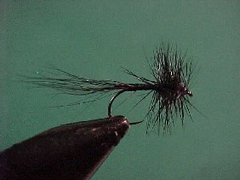
{{+1}}Black spinner{{-1}}
{{start}}
The term spinner is generally used only in the context of referring to a small number of Mayflies including Black, Red and Orange Spinners when they are both on the water and in the air. The following Spinner is a generic representation for members of the “Leptophlebiidae” family of Mayflies and the various Highland Duns & Spinners, which are members of the “Oniscigastridae” family. Hatches generally occurs between the months of October and March.{{end}}
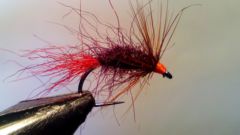
{{+1}}Claret carrot{{-1}}
{{start}}
Based on the design of the carrot fly this version is particularly appealing to fish feeding on emerging Mayfly in Tasmania's central and western lake.{{end}}
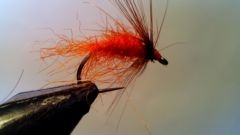
{{+1}}Carrot dry fly{{-1}}
{{start}}
Tied with natural seals fur it is a fly that sits well on the water and easily sheds water with a snappy false cast.{{end}}
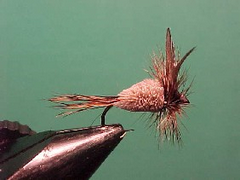
{{+1}}Baetis dun{{-1}}
{{start}}
The Adams Irresistible is just one representation of a Baetis Dun. It floats like a cork and what's more fish accept it as a variety of food items. In smaller sizes it is an excellent Baetis Dun imitation and an excellent fly in still water particularly when Snow Flake Caddis are about. In larger sizes it is an excellent fly for fast water or as a top fly in dry / nymph combination. Change the material colors to tie flies representing Baetis Duns in your target fishery.{{end}}

{{+1}}Red and orange spinner{{-1}}
{{start}}
The term 'spinner' refers to that stage in a Dun's life cycle when it has moved off the water or, vegetation etc. after drying its wings. The adult or imago of all Mayflies, Caddis flies and Midges can technically be regarded as spinners. The following Spinner is a generic representation for members of the “Leptophlebiidae” family of Mayflies and the various Highland Duns & Spinners, which are members of the “Oniscigastridae” family. Hatches generally occurs between the months of October and March. Carry black, brown, red and blue damsel versions.{{end}}
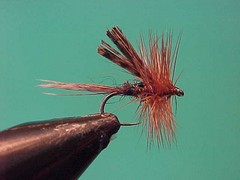
{{+1}}Caenis Dun{{-1}}
{{start}}
If you have a look at Caenis Duns there are fundamentals of shape that are common across the species and captured by this pattern. The tail consists of only three filaments; the body starts thin and is then cigar shaped with 9 distinct segments. They have 6 legs and wings faces back at about a 60 degree angle. The common colours are grey and brown and when they are hatching the vision is of very small single winged sailing boats on the water.{{end}}













